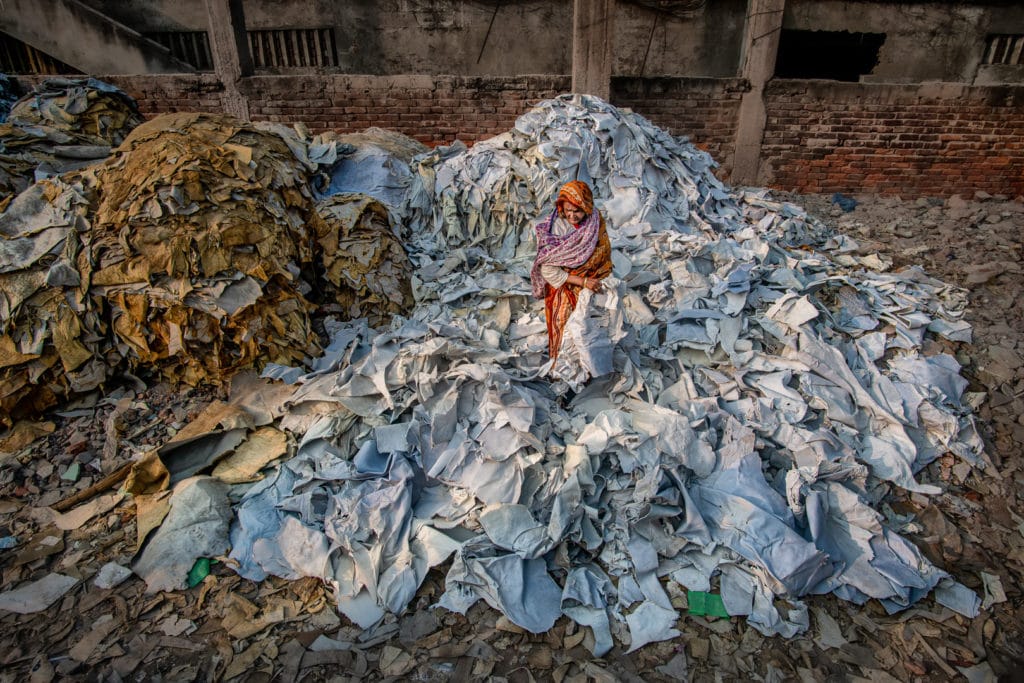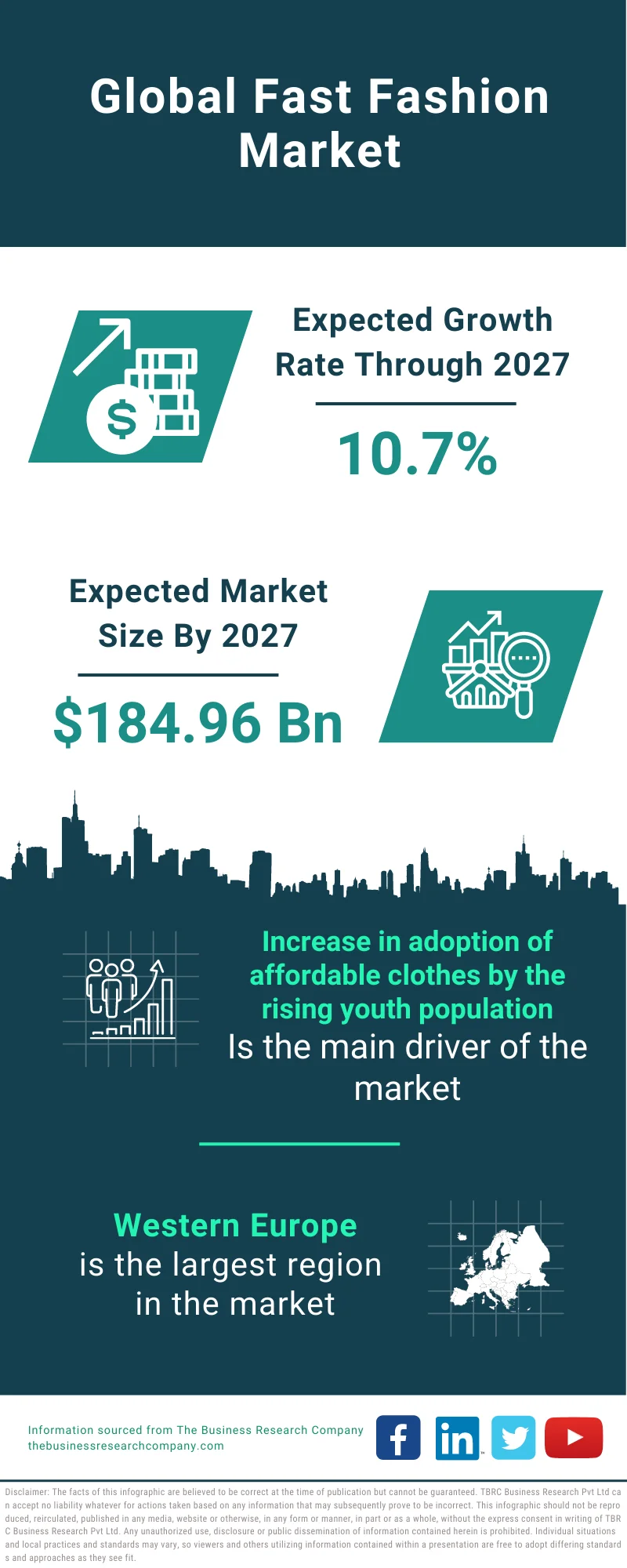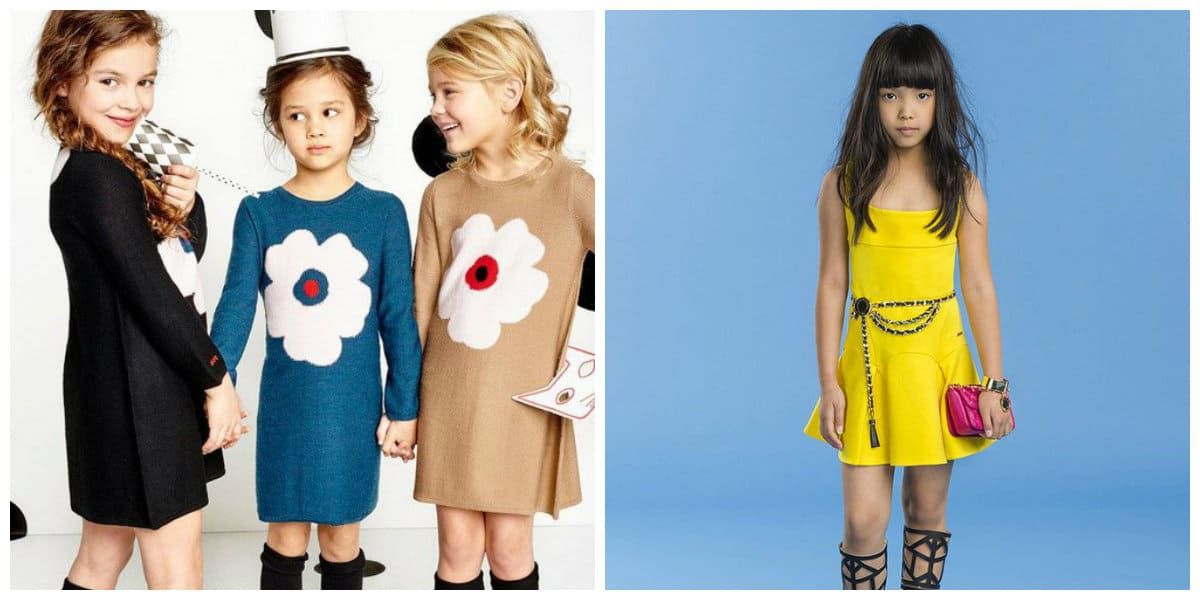Fast fashion significantly influences kids’ clothing trends by promoting quick consumption and constantly changing styles. This leads to a cycle of overconsumption and waste among young consumers.
The rise of fast fashion has transformed the landscape of kids’ clothing, making trendy outfits more accessible than ever. Parents face pressure to keep up with rapidly shifting styles, often prioritizing affordability and availability over quality. Children, influenced by social media and peers, desire the latest trends, which drives demand for ever-changing collections.
This phenomenon not only impacts how kids dress but also shapes their perceptions of fashion and self-expression. As brands churn out new designs, the sustainability of these practices raises concerns, prompting a discussion on the long-term effects of fast fashion on the environment and children’s values.
Table of Contents
The Rise Of Fast Fashion In The Kids’ Market
Fast fashion is changing how kids dress. Brands create trendy clothes quickly. These clothes are often cheap and easy to buy. Parents want their kids to look stylish. Kids want to fit in with their friends. This creates a cycle of constant buying and discarding.
Accelerated Trend Cycles
The speed of fashion trends for kids is astonishing. New styles appear faster than ever. Here are some key points:
- Trends last only a few weeks.
- Stores restock with new items frequently.
- Kids feel pressured to keep up.
Kids’ clothing trends now change monthly. This quick turnover impacts parents’ wallets. They often buy items that kids wear only a few times.
| Trend Duration | Impact on Buying |
|---|---|
| Weekly | Increased spending |
| Monthly | More waste |
Influence Of Social Media
Social media plays a huge role in kids’ fashion choices. Kids see their favorite influencers wearing trendy outfits. This creates a strong desire to imitate them. Here are some effects:
- Kids want to wear what they see online.
- Parents feel pressured to buy these clothes.
- Trendy items often sell out quickly.
Platforms like Instagram and TikTok showcase new styles. Children share their outfits online. This leads to a constant cycle of desire and purchase.
Fast fashion brands leverage this influence. They use bright colors and catchy designs. These attract kids’ attention easily.
The Economics Behind Fast Fashion For Children
Fast fashion has transformed kids’ clothing trends. Many parents face tough choices. They want stylish outfits without breaking the bank. Understanding the economics behind this trend helps parents make informed decisions.
Price Points And Parental Decisions
Fast fashion brands offer low prices for kids’ clothing. Parents often prioritize cost over quality. Here are some common price points:
| Brand | Average Price |
|---|---|
| Brand A | $10 |
| Brand B | $15 |
| Brand C | $20 |
These low prices attract parents. But, cheap clothing can lead to poor choices. Kids outgrow clothes quickly. Parents often buy more to keep up with trends. This cycle increases spending.
Cost Vs. Quality In Kids’ Apparel
Fast fashion focuses on trendy designs. Quality often suffers for lower prices. Parents must consider:
- Durability: Will the clothing last?
- Comfort: Is it soft and easy to wear?
- Safety: Are there harmful chemicals in the fabric?
Investing in higher-quality clothing can save money. Durable clothes last longer. Here are benefits of quality kids’ apparel:
- Fewer replacements needed.
- Better comfort for active kids.
- Healthier materials for sensitive skin.
Fast fashion may tempt parents with low prices. Understanding its impacts can lead to better choices. Prioritizing quality is essential for kids’ long-term needs.
Environmental Impact Of Children’s Fast Fashion
Fast fashion affects many areas of our lives, especially for children. Kids grow fast, and parents often buy new clothes. This creates a huge problem for our planet. The production of cheap children’s clothing harms the environment. Let’s explore the environmental impact of fast fashion on kids’ clothing trends.
Textile Waste From Kids’ Clothing
Fast fashion leads to a lot of textile waste. Most kids’ clothes are worn only a few times. After that, they often end up in landfills. Here are some important facts:
- Around 92 million tons of textile waste are created each year.
- Children’s clothing contributes significantly to this waste.
- Only 15% of textiles are recycled globally.
Many clothes could be reused or donated. Instead, they are thrown away. This waste pollutes our soil and water. It also releases harmful gases into the air. Parents can help by choosing quality over quantity.
Carbon Footprint Of The Industry
The carbon footprint of the children’s fast fashion industry is alarming. Producing cheap clothes takes a lot of energy. Here are some key points:
| Activity | CO2 Emissions (in tons) |
|---|---|
| Production of 1 kg of fabric | Up to 23 tons |
| Transportation of clothing | Varies widely, but significant |
| Waste management | Releases methane from landfills |
Kids’ clothing is often shipped worldwide. This increases the carbon footprint. Choosing local brands can help reduce this impact. Parents can teach children the value of sustainable fashion. Simple changes can make a big difference for our planet.

Credit: www.cato.org
Social Implications Of Fast Fashion For The Young
Fast fashion greatly influences kids’ clothing trends. It creates a cycle of constant buying and disposing. This affects children’s social lives and self-esteem. Here, we explore key social implications.
Peer Pressure And Fashion
Kids face immense peer pressure regarding fashion choices. They want to fit in with their friends. Many believe that wearing trendy clothes earns them respect. This creates a strong desire for popular brands.
- Brand Awareness: Kids recognize logos and brands quickly.
- Social Status: Fashion impacts how kids perceive themselves.
- Group Identity: Clothing choices can define friend groups.
Parents often feel pressured to keep up with trends. This can lead to overspending on clothes. Kids may feel anxious if they can’t afford new styles. The pressure can affect their mental well-being.
The Desire For Newness
The desire for new clothes is strong among children. Fast fashion promotes a constant need for change. Kids often want the latest styles, even if they already own many clothes.
| Reasons for Newness | Effects on Kids |
|---|---|
| Trendy styles | Feeling fashionable |
| Social media influence | Comparison with peers |
| Advertising | Desire to own more |
This cycle leads to wasteful habits. Kids might discard clothes that are still usable. Teaching kids about sustainability is vital. They need to understand the value of clothing and the impact of their choices.
The Psychological Effects On Children
Fast fashion impacts children’s minds. It shapes how they see the world. Kids are exposed to constant trends. This leads to changes in their behavior and attitudes.
Materialism In Early Years
Materialism starts young. Kids often equate happiness with owning things. Fast fashion encourages this thinking. Many children want the latest clothes to fit in.
- Children believe new clothes bring joy.
- They feel pressure to own trendy items.
- Older kids may focus on brands over friendships.
This mindset can lead to:
- Low self-esteem if they can’t afford brands.
- Constant desire for new items.
- Stress from comparing with peers.
Brand Consciousness In Childhood
Brand awareness grows early. Kids notice logos and names. Fast fashion brands market directly to them.
| Brand | Target Age Group | Marketing Strategy |
|---|---|---|
| Zara Kids | 3-12 years | Trendy designs, social media ads |
| H&M Kids | 0-14 years | Colorful displays, celebrity endorsements |
| Forever 21 | 10-18 years | Pop culture references, influencer marketing |
Brand consciousness can lead to:
- Unhealthy competition among peers.
- Focus on appearance over character.
- Confusion about true self-worth.
Understanding these effects is vital. Parents can guide children towards healthier values.

Credit: earth.org
Innovation And Sustainability In Kids’ Clothing
Fast fashion impacts kids’ clothing trends. It pushes for quick, trendy styles. However, a shift toward innovation and sustainability is emerging. Parents seek eco-friendly options for their children. This change focuses on responsible production and lasting quality.
Eco-friendly Brands Emerging
Many new brands focus on eco-friendly practices. They prioritize the environment while making stylish clothes. Here are some notable brands:
- Mini Rodini: Uses organic cotton and recycled materials.
- Frugi: Offers colorful clothes made from organic fabrics.
- Patagonia Kids: Focuses on fair trade and sustainability.
- H&M Conscious: A line within H&M using recycled materials.
Sustainable Materials And Practices
Sustainable materials play a key role in kids’ clothing. Many brands explore new options. Here are some popular materials:
| Material | Description | Benefits |
|---|---|---|
| Organic Cotton | Grown without harmful chemicals. | Better for skin and the planet. |
| Recycled Polyester | Made from plastic bottles. | Reduces waste and uses less energy. |
| Bamboo | A fast-growing, renewable resource. | Soft, breathable, and biodegradable. |
| Hemp | Strong and durable fiber. | Requires less water and pesticides. |
Brands are adopting sustainable practices. They focus on:
- Ethical labor practices.
- Reducing water usage.
- Minimizing waste in production.
Parents can now choose stylish and eco-friendly options. This trend supports a healthier planet for future generations.
The Role Of Parents And Guardians
Parents and guardians play a crucial role in shaping kids’ clothing trends. Their choices impact not only styles but also values. Understanding fast fashion helps families make better decisions. Sustainable choices can lead to a positive change.
Navigating Consumer Choices
Parents face many choices in kids’ fashion. Fast fashion offers trendy items at low prices. These clothes often lack quality and durability. Here are some tips for making smart choices:
- Research Brands: Look for companies that prioritize sustainability.
- Quality Over Quantity: Choose fewer, high-quality items.
- Second-Hand Shopping: Consider thrift stores or online swaps.
Making informed decisions helps children learn the value of their clothing. Teach them to appreciate well-made items. Discuss the impact of fast fashion on the environment.
Educating Kids On Sustainable Fashion
Teaching children about sustainable fashion is vital. Kids should understand why it matters. Here are some engaging ways to educate them:
- Storytime: Share books about eco-friendly practices.
- DIY Projects: Encourage upcycling old clothes.
- Fashion Shows: Organize events to showcase sustainable outfits.
By involving kids in discussions, parents can spark interest. This encourages kids to think critically about fashion choices. Understanding sustainability will shape their future decisions.

Credit: www.thebusinessresearchcompany.com
Marketing Tactics And Kids’ Fashion
Fast fashion brands use clever marketing tactics to attract kids. These strategies shape trends and influence what children wear. Kids are easily swayed by flashy ads and trendy styles. Understanding these tactics helps parents make informed choices.
Advertising Strategies
Fast fashion companies employ various advertising strategies. They aim to grab kids’ attention quickly. Here are some common methods:
- Bright Colors: Ads use vibrant colors to catch the eye.
- Fun Characters: Popular characters appear in campaigns.
- Interactive Content: Games and quizzes engage kids online.
These strategies create a sense of excitement. Kids want what they see. They feel the need to keep up with their friends.
The Power Of Celebrity Endorsements
Celebrity endorsements play a huge role in kids’ fashion. Famous stars influence trends. Kids admire these celebrities and want to emulate them.
Here’s how celebrity endorsements impact kids:
- Brand Trust: Kids trust brands endorsed by their favorite stars.
- Trend Setting: Celebrities set new trends that kids follow.
- Social Media Influence: Stars share their outfits on platforms like Instagram.
These endorsements create a desire for specific styles. Kids often beg parents to buy the latest trends. Fast fashion brands thrive on this influence.
Fast Fashion’s Influence On Kids’ Identity And Self-expression
Fast fashion shapes how kids express themselves through clothing. It offers trendy options at low prices. This trend influences their identity and social interactions. Kids want to fit in while showing their uniqueness.
Clothing As A Form Of Self-expression
Kids often use clothing to share who they are. Fashion choices can reflect interests, emotions, and creativity. Here are some ways clothing helps kids express themselves:
- Choosing favorite colors and styles
- Wearing graphic tees with beloved characters
- Mixing and matching outfits for uniqueness
Fast fashion provides many options. It allows kids to try new styles frequently. This constant change can boost their confidence.
Conformity Vs. Individuality
Fast fashion creates a challenge between conformity and individuality. Many kids want to fit in with their peers. Popular trends often lead to similar outfits in schools.
This can pressure kids to follow trends. They may fear standing out. Yet, some kids embrace their unique style. They mix old pieces with trendy items.
| Conformity | Individuality |
|---|---|
| Wearing the same brands as friends | Creating a personal style |
| Following popular trends | Mixing vintage with modern fashion |
| Feeling pressure to fit in | Embracing unique patterns and colors |
This balance shapes how kids view themselves. It influences their social experiences and friendships. Understanding this dynamic is crucial for parents and educators.
The Lifecycle Of Kids’ Clothing
The lifecycle of kids’ clothing is short and fast-paced. Fast fashion brands produce items quickly. Trends change rapidly, affecting what children wear. Understanding this lifecycle helps us see the impact on our planet.
From Production To Disposal
Kids’ clothing production starts with raw materials. Fabrics like cotton and polyester are common. Factories create garments in large quantities. This process often harms the environment.
- Raw Material Extraction: Cotton farming uses lots of water.
- Manufacturing: Factories emit greenhouse gases.
- Transportation: Shipping clothes worldwide increases carbon footprint.
- Retail: Stores promote fast turnover of styles.
- Disposal: Many clothes end up in landfills.
Children quickly outgrow clothes. Parents buy new items often. This cycle leads to waste and pollution.
Second-hand Markets And Recycling
Second-hand markets offer a solution. They extend the lifecycle of kids’ clothing. Many parents sell or donate outgrown items. This helps reduce waste.
| Benefits of Second-Hand Clothing | Impact on Environment |
|---|---|
| Cost-effective for families | Reduces landfill waste |
| Unique styles available | Less demand for new production |
| Supports local businesses | Decreases resource consumption |
Recycling programs also help. Some brands recycle old clothes into new ones. This reduces the need for raw materials. Parents can support sustainable practices by choosing second-hand options.
Awareness of the lifecycle of kids’ clothing encourages better choices. Parents can make a difference by embracing sustainability.
The Legal And Ethical Dimensions
Fast fashion affects kids’ clothing trends deeply. Legal and ethical issues arise in manufacturing. Understanding these issues is crucial for parents and consumers.
Labor Practices In Manufacturing
Many fast fashion brands rely on cheap labor. Workers often face poor conditions. These labor practices include:
- Long working hours
- Low wages
- No job security
- Unsafe environments
Children can be part of this workforce. They may work in factories instead of schools. This practice raises serious ethical concerns.
Regulations On Kids’ Clothing
Regulations for kids’ clothing are essential. They ensure safety and ethical production. Here are key regulations:
| Regulation | Description |
|---|---|
| Consumer Product Safety Improvement Act (CPSIA) | Limits harmful substances in kids’ clothing. |
| Fair Labor Standards Act (FLSA) | Sets minimum wage and overtime for workers. |
| Children’s Online Privacy Protection Act (COPPA) | Protects children’s data privacy online. |
These regulations help protect children. They ensure that clothing is safe and ethically made.
Consumer Trends And Future Projections
Fast fashion impacts kids’ clothing trends in various ways. Consumer habits shift rapidly. Kids demand more stylish and trendy clothes. Parents are influenced by these changes, leading to new buying patterns.
Shifting Buying Habits
Today’s parents prioritize style and affordability. They seek trendy clothing for their children. Fast fashion brands cater to these needs. Here are some notable trends:
- Increased Online Shopping: More parents shop online.
- Social Media Influence: Trends spread quickly on platforms.
- Sustainability Awareness: Parents consider eco-friendly options.
Kids often express their preferences. Parents listen closely to their children’s choices. This interaction shapes buying habits significantly.
Predictions For The Next Decade
Future projections show exciting changes for kids’ fashion. Here are key predictions:
- Rise of Customization: Brands will offer personalized options.
- Focus on Sustainability: Eco-friendly materials will gain popularity.
- Tech Integration: Wearable tech may become common.
Fast fashion will continue evolving. Brands must adapt to meet changing demands. The focus will be on affordability, style, and sustainability. Kids will drive these trends forward.
Creating A Balanced Approach To Kids’ Fashion
Fast fashion affects kids’ clothing trends significantly. Kids want trendy clothes, but sustainability is essential. A balanced approach ensures style and responsibility. Parents can guide their children toward better choices.
Combining Style With Sustainability
Style and sustainability can coexist in kids’ fashion. Here are some ways to achieve this:
- Choose Quality Over Quantity: Buy fewer, high-quality items.
- Opt for Timeless Styles: Select classic designs that last.
- Encourage DIY Projects: Let kids customize their clothes.
Brands are also changing. They create eco-friendly collections. These clothes use organic materials and recycled fabrics.
Educational Initiatives For Conscious Consumption
Education plays a vital role in shaping kids’ views on fashion. Schools and communities can promote awareness through various initiatives:
- Workshops: Host sessions on sustainability in fashion.
- Fashion Shows: Organize events with eco-friendly themes.
- Collaborations: Partner with brands that focus on ethical practices.
Kids learn about the impact of their choices. They can make informed decisions and embrace sustainable fashion. This creates a ripple effect in their communities.
Frequently Asked Questions
How Does Fast Fashion Impact Children’s Clothing?
Fast fashion drives rapid trends, leading to lower quality and sustainability issues in children’s clothing.
What Are The Trends In Kids’ Fashion Today?
Current trends emphasize comfort, vibrant colors, and eco-friendly materials, influenced by fast fashion’s rapid turnover.
Why Is Sustainability Important In Kids’ Clothing?
Sustainability ensures children’s clothing is safe, durable, and environmentally friendly, reducing waste and promoting ethical production practices.
How Can Parents Choose Better Clothing For Kids?
Parents should prioritize quality, durability, and eco-friendly brands to counteract the effects of fast fashion on children’s clothing.
Conclusion
Fast fashion is reshaping kids’ clothing trends in profound ways. It promotes rapid consumption, leading to a cycle of constant buying. Parents often feel pressured to keep up with the latest styles. Understanding this impact can help make more sustainable choices.
Ultimately, prioritizing quality over quantity benefits both children and the planet.







